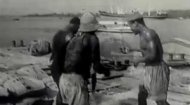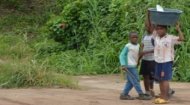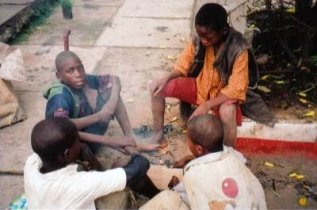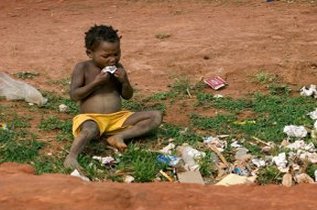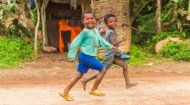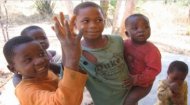|
French Cameroon gained independence in 1960, followed by the Southern Cameroons (British-administered) voting to unite with French Cameroon in 1961, forming the Federal Republic of Cameroon. This reunification was a pivotal moment, shaping the nation's unique bilingual and bicultural identity that persists today. Ahmadou Ahidjo served as the first president, followed by Paul Biya in 1982, whose long tenure has guided Cameroon through significant political and economic shifts. The legacy of this colonial past, particularly the Anglophone-Francophone divide, continues to influence its modern socio-political landscape. Today power rests in the grip of President Paul Biya, formerly the Prime Minister of Cameroon from 1975 to 1982 under Ahmadou Ahidjo, who was first elected into presidential office on 6th November 1982 and who is now the second longest ruling president in Africa, the longest-ruling non-royal leader in the world and the oldest head-of-state in Africa.
Cameroonian culture is vibrant and expressive. Music is a powerful force, with genres like Makossa (a blend of traditional rhythms, jazz, and pop) and Bikutsi (up-tempo dance music from the Beti people) gaining international recognition. Traditional dances, elaborate ceremonies marking life events, and storytelling are integral to daily life. Family and community ties are incredibly strong, emphasizing respect for elders, hospitality, and mutual support. Education is highly valued, with a growing number of universities and schools, though challenges in access and quality remain, particularly in rural areas. Healthcare infrastructure also faces ongoing development, but the resilience and collective spirit of the people are undeniable strengths. Cameroon boasts one of sub-Saharan Africa's most diverse economies, propelled by abundant natural resources and strategic geographical positioning. Often referred to as the economic engine of Central Africa, its economy is primarily driven by agriculture, petroleum, and forestry. Agriculture remains the backbone of the economy, employing a large portion of the population. Key cash crops include cocoa, coffee, cotton, palm oil, bananas, and rubber, making Cameroon a significant exporter of these commodities. The country is also rich in natural resources, with substantial reserves of crude oil, natural gas, timber, and minerals such such as bauxite, iron ore, and cobalt. The petroleum sector contributes significantly to government revenue, although efforts are underway to diversify the economy away from over-reliance on oil. Infrastructure development has been a priority, with major investments in roads, energy (hydroelectric projects), and port facilities like the deep-sea port of Kribi, which aims to become a major regional trade hub. Douala, the largest city, serves as the economic capital and hosts the country's busiest port. Despite impressive growth potential, Cameroon faces challenges in industrialization, governance, and ensuring equitable distribution of wealth. However, its strategic position as a gateway to landlocked Central African nations and its relatively stable political environment make it an attractive destination for foreign investment. Despite its immense potential, Cameroon is not without its significant challenges, which often shape daily life and national development. Governance issues, including concerns about corruption and institutional capacity, continue to hinder progress and deter investment. The Far North region has been plagued by the Boko Haram insurgency, leading to displacement and humanitarian crises. More acutely, the Anglophone crisis, which began in late 2016, has escalated into a protracted conflict in the Northwest and Southwest regions. This conflict, stemming from grievances over perceived marginalization of the English-speaking minority, has resulted in widespread violence, displacement, and a severe humanitarian impact, significantly disrupting daily life and economic activity in these areas. Poverty and inequality, particularly between urban and rural areas, persist. Access to quality education, healthcare, and basic services remains uneven. Environmentally, Cameroon faces threats from deforestation, particularly in its rich rainforests, and the impacts of climate change, including unpredictable weather patterns and pressure on agricultural yields. Addressing these multifaceted challenges requires sustained effort, political will, and international cooperation. Daily life in Cameroon is a vibrant blend of tradition and modernity, characterized by resilience, community spirit, and a zest for life. Mornings often begin early, with bustling markets coming alive across cities and villages. These markets are not just places of commerce but also vital social hubs where news is exchanged, and friendships are forged. The air is often filled with the aroma of local dishes and the lively chatter of vendors and customers. |
Cameroon Profile |
Cameroon Profile |
Cameroon Profile | Cameroon Profile |
A video documentary aand article about UNICEF's work in addressing child malnutrition in Cameroon.
More >

|
Food is central to Cameroonian culture and daily sustenance. Staples include fufu (a starchy paste made from cassava, plantain, or cocoyam), plantains, yams, and rice, typically served with rich, spicy sauces. Popular dishes include "Ndolé" (a bitter leaf stew with peanuts and meat/fish), "Eru" (a vegetable soup with waterleaf and okasi), and "achu" (a cocoyam-based dish from the Anglophone regions). These meals are often shared communally, reinforcing family bonds. Transportation around cities often involves crowded "bush taxis" (shared cabs) or the ubiquitous "okada" (motorcycle taxis). Football (soccer) is more than just a sport; it's a national passion, bringing people together across all divides, especially when the "Indomitable Lions" national team plays. Despite the challenges, Cameroonians are known for their warmth, hospitality, and an enduring sense of optimism, making visitors feel welcome and part of the vibrant rhythm of life. For the traveller, Cameroon offers an unparalleled array of tourist attractions, truly embodying its "Africa in Miniature" slogan: Mount Cameroon: Dominating the landscape near the coast, this active volcano is the highest peak in West Africa, offering challenging hikes and breathtaking views. Today Cameroon is generally seen as a stable country with this stability providing a platform for the development of its infrastructure and inward investment, however there is a strong movement in the former British Cameroon to break away and form the independent Republic of Ambazonia. Indeed this was proclaimed in 1999 but has gained no recognition either within and outside of Cameroon. The terrorist groups Boko Haram and the Islamic State West Africa (ISWA) are known to be active in the far north region of Cameroon and attacks have been carried out in the capital Yaoundé in the summer of 2020 and further such attacks are threatened with Boko Haram denouncing Cameroon's involvement in the regional fight to counter them and their aims. Cameroon is in 155th place out of 193 countries and territories in 2025 when ranked in terms of life expectancy, literacy, access to knowledge and the living standards of a country. Life expectancy for a child in Cameroon is 64.2 years (2025), not helped by the prevalence of HIV/AIDS where in 2020 a staggering 350,000 have been orphaned by AIDS. Many of these orphaned children, along with others who escape poverty or family breakdown, end up on the streets living through vending, begging or stealing. For more about Cameroon, explore our Cameroon profile pages above.
|
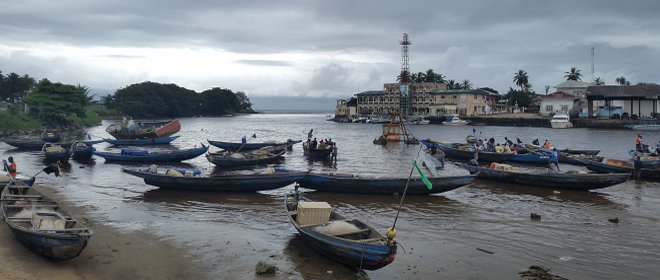
 Cameroon's true essence lies in its astonishing social and cultural diversity. With over 250 distinct ethnic groups, the country is a living museum of African traditions. The major linguistic families include Bantu, Semi-Bantu (or Sudano-Bantu), and Sudanese, each contributing unique languages, customs, and artistic expressions. This melting pot of cultures is further enriched by its official languages: English and French, making Cameroon one of the few officially bilingual nations in Africa. Religion also plays a significant role, with Christianity (Catholicism and Protestantism) predominant in the south and west, Islam primarily in the north, and traditional African religions practiced alongside these faiths across the country. This religious pluralism generally fosters an environment of peaceful coexistence.
Cameroon's true essence lies in its astonishing social and cultural diversity. With over 250 distinct ethnic groups, the country is a living museum of African traditions. The major linguistic families include Bantu, Semi-Bantu (or Sudano-Bantu), and Sudanese, each contributing unique languages, customs, and artistic expressions. This melting pot of cultures is further enriched by its official languages: English and French, making Cameroon one of the few officially bilingual nations in Africa. Religion also plays a significant role, with Christianity (Catholicism and Protestantism) predominant in the south and west, Islam primarily in the north, and traditional African religions practiced alongside these faiths across the country. This religious pluralism generally fosters an environment of peaceful coexistence.